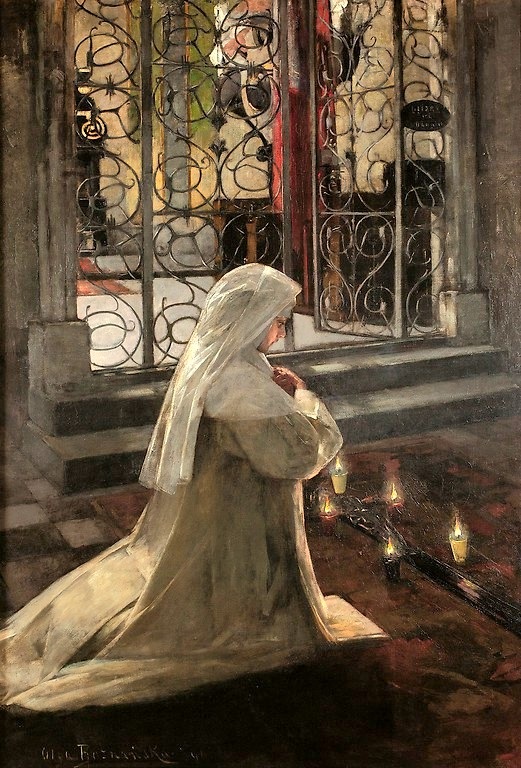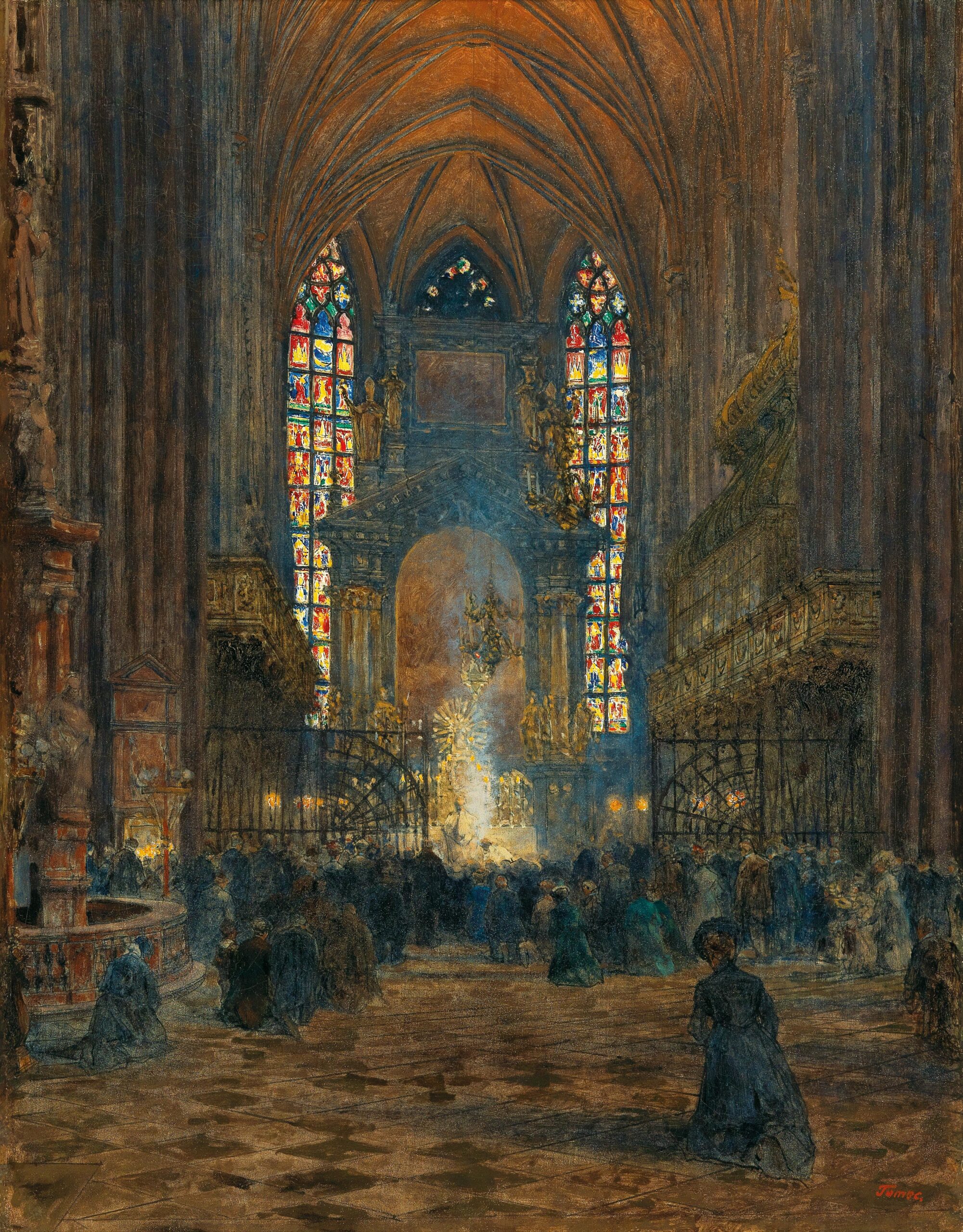In the apostolic brief that placed the pious shepherdess St. Germaine Cousin among the Blessed, she is described as “a simple maiden, humble, and of lowly birth, but so greatly enlightened by the gifts of divine wisdom and understanding, and so remarkable for her transcendent virtues, that she shone like a star, not only in her native France, but also throughout the Catholic Church.”
Germaine was born at Pibrac, a village ten miles from Toulouse, France. She was the daughter of Laurent Cousin, a poor agricultural laborer, and Marie Laroche, who died when her daughter was scarcely out of the cradle. Germaine was born with a right hand that was crippled and powerless. Always a sickly child, she soon developed a scrofulous condition of the neck glands that deformed her appearance with huge swellings.
In addition to her physical ailments, the child had to endure a father who had no affection for her, while his second wife actively disliked her. After taking charge of the household, the stepmother treated Germaine harshly—and after the birth of her own children she pretended a desire to spare her children from the contagion of scrofula and convinced With perfect resignation and simplicity of heart, Germaine accepted the treatment she received—and this God used to lead her to higher spirituality. While tending the flocks in the quiet of the fields, she communed with her divine Creator. She was devoted to the recitation of the Holy Rosary, which she recited with great care. When the church bell signaled the Angelus, she would kneel down and pray, regardless of the mud or snow.
Germaine attended Holy Mass every day. If she was in the fields when it was time for the Holy Sacrifice, she would plant her crook in the ground and commend her flock to her guardian angel before hurrying to the church. On her return, she never once found any of the sheep missing—this despite the fact that wolves lurked in the neighboring forest waiting to attack unattended animals. Germaine received Holy Communion as often as it was then allowed. She never engaged in the social life of the peasants or mixed with girls of her own age, but she did take pleasure in instructing children in the truths of the Catholic faith and encouraging them in the love of God.
Because of the treatment given her by her parents, Germaine was likewise treated by neighbors with intolerance—but they began to change their attitude when strange reports started circulating about her. They became aware of her daily attendance at Mass and her prayerful attitude. Then one day, when the stream she had to cross to attend Mass was so swollen with rain that others would not dare attempt a crossing, two villagers solemnly swore that when Germaine approached the stream, the waters separated to permit a safe and dry passage—just as the Red Sea had parted for the Israelites at the time of Moses.
The villagers soon began to treat Germaine with courtesy, claiming that the young girl was a saint. Her father and stepmother even relented toward her and offered to take her into the house, but Germaine declined their offer, preferring to live as before.
Quite unexpectedly, Germaine was found one morning lying dead on her straw mat under the stairs. She was twenty-two years of age.
In view of her saintly conduct and the miracles witnessed by the villagers, the body of the poor shepherdess was buried in the Church of Pibrac, where she had so often attended Holy Mass. In 1644, forty-three years after her death, two church workers, Gaillard Barous and Nicholas Case, opened the vault to make room for another burial. Upon lifting the flagstone covering the tomb, the workmen were amazed to find the body of a beautiful young girl lying in a perfect state of preservation.
Miracles of healing became so numerous that a petition was filed in the year 1700 for the beatification of the shepherdess. During the same year, a medical examination by experts revealed that the body had not been embalmed. Other tests showed that the preservation was not due to any property inherent in the soil. After remaining incorrupt for almost two hundred years, the body was destroyed in 1795 during the French Revolution by a revolutionary tinsmith named Toulza, who threw quicklime and water on the body.
The little shepherdess, so abused and neglected during her lifetime, has been greatly loved and venerated throughout the world, but especially in Pibrac. There, on her feast day, June 15, huge pilgrimages wend their way to the church, where special ceremonies are observed in her honor. There Germaine’s relics are kept in a splendid reliquary resembling a small church. Atop this reliquary is a miniature statue of the kneeling Germaine, who is holding her shepherd’s crook. Behind her, several sheep seem to be grazing.In addition to the church where Germaine attended Mass and where she is now buried, pilgrims to Pibrac may also visit the Cousin home with its attached barn, where Germaine slept every night and where she died.
This article is taken from a chapter in Lay Saints: Noble and Humble by Joan Caroll Cruz, which is available from TAN Books.









